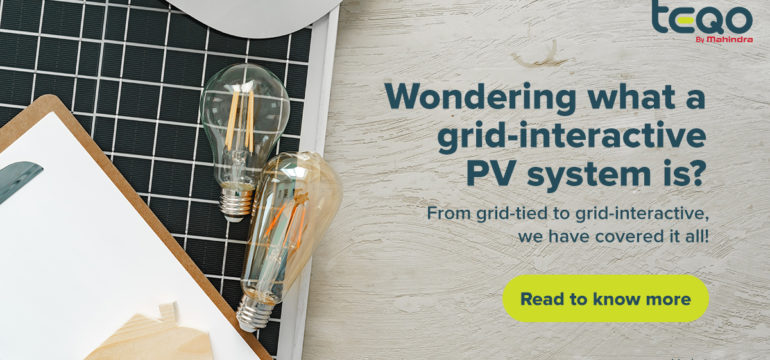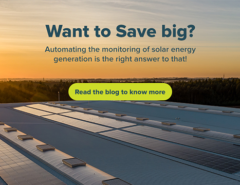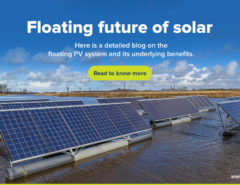Solar power in India is a fast-growing sector. The country’s Solar PV Plant installation capacity was 36.9 GW as of 30 November 2020. The Indian government had an initial target of 20 GW capacity for 2022, which was achieved four years ahead of schedule.
Solar PV Plants are presently set to line the tops of homes all over the globe.
The Future of Solar energy considers only the 2 widely known classes of technologies for converting solar power into electricity — photovoltaic (PV) and concentrated solar power(CSP) because a Solar PV Plant typically lasts several decades. Technologies in these classes will dominate solar-powered generation between now and 2050. Recently, India has achieved the fifth position in the world in solar power deployment.
With mechanical upgrades, the economy of scale and a decrease in solar cell/module costs, solar tariff in India is very competitive and has accomplished framework equality. A grid-interactive framework produces clean power from the unlimited energy of daylight. Grid-interactive inverters may also use other renewable sources like wind or hydropower. At the point when the sun shines, the PV system charges its deep cycle solar batteries and feeds all abundant clean power into the power matrix via the inverter. When there’s no solar energy in the evening, the framework can draw power from the electricity grid. When there’s an influence failure, the inverter draws clean power from the solar panels and batteries to satisfy the electricity needs of your home or business.
What is Grid Tied?
It is a kind of sun oriented inverter that is fit for taking care of the converted energy into the main power grid by matching their corresponding phase and frequency.
The concept is straightforward: the system is connected to the grid and made possible by your current utility grid. Solar panels at a Solar PV plant collect the sun’s energy to power your home, and any overflow is directed back to it. Unlike an off-the-grid or standalone setup, the solar panels add tandem along with your current system. The flexible nature of this technique is what leads this to be the foremost widely used and popular option for those seeking to create the transition to solar energy.
Advantages
- Easy feeding of energy into the power grid
- Easy installation
- Cost-effective
- Combats high electricity demand
The capacity of grid-tied inverters accessible in India generally varies from 1 KW to 50 KW and comes in 2 distinctive stage variants — single-stage and three-stage.
What is Grid-Interactive?
They are also known as stand-alone inverters since they are absolutely autonomous for adjusting with a solar panel. They receive energy for conversion from batteries that are charged with the help of photovoltaic arrays. This type of solar inverters are utilised in distant regions, where individuals wish to live totally off the network.
In a grid-interactive system, that inverter could be a much smarter, more agile device, capable of doing three things as hostile as the one-trick grid-tied inverter:
- Like a grid-tied inverter, it can convert solar-generated DC power to AC power.
- It can also function as a battery charger and store energy in a battery framework intended for private and business applications.
- It can convert battery-produced DC during an outage into usable AC power and charge those batteries during the day from the panels or a generator.
Grid-tied vs Grid Interactive
The main difference between the two system options isn’t what happens when the local power grid is functioning normally, but what happens when the power is out or fluctuating.
There are two reasons why grid-tied systems can’t help during these occasions. First, they need to disconnect per national and international industry safety standards for safety reasons. Second, the facility fluctuations in solar panel-generated energy caused by cloud shadows, wind, trees and natural light variation make it impossible to use this non-grid augmented raw power to power anything within the home or office directly from the panels.
In contrast, grid-interactive PV systems with their bi-directional energy transfer capability can tie into the local energy utility when it benefits users and cop-out when it doesn’t. When the user wants to lower their energy costs and consumption, they can rely primarily on renewable energy sources, turning to the grid only when needed to augment their clean self-produced power or charge an energy stockpiling framework. In this way, grid interaction lets consumer and commercial users get profoundly dependable on cost-cognizant energy while remaining naturally mindful and responsible.
Most energy consumers have suffered the results of power outages. To lose a refrigerator stuffed with groceries or lose every day of productivity when the business goes dark can be a frustrating experience that sparks conversation about better options.
Adding further to grid-tied power frustrations, developing countries often only have access to the standard facility for a part of the day. A grid-interactive option delivers continuous access to electricity with additional compatible and connectable sources, often for a minimal increment. Users don’t want to extend coal, nuclear or other controversial styles of power generation to fulfil their needs. The demand focuses on reliability and renewability. By creating ongoing cost savings while diminishing the carbon impression, grid-interactive systems address those issues.
This is where the grid-interactive system is a clear winner.




